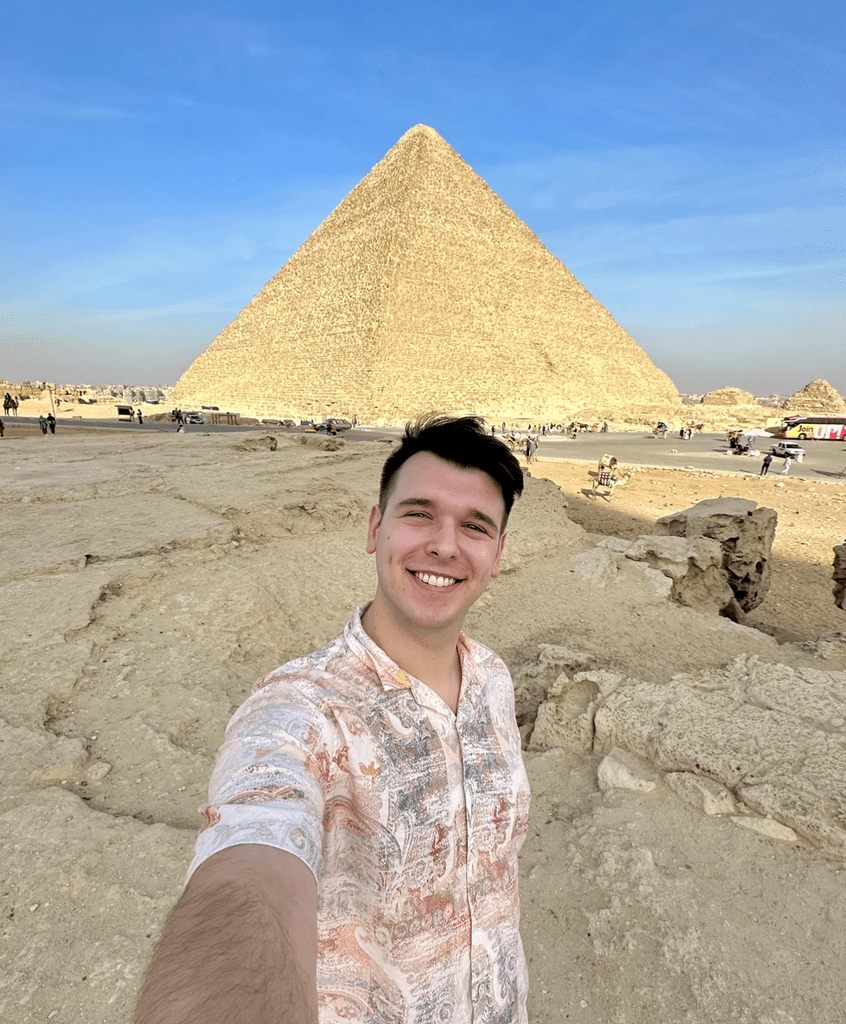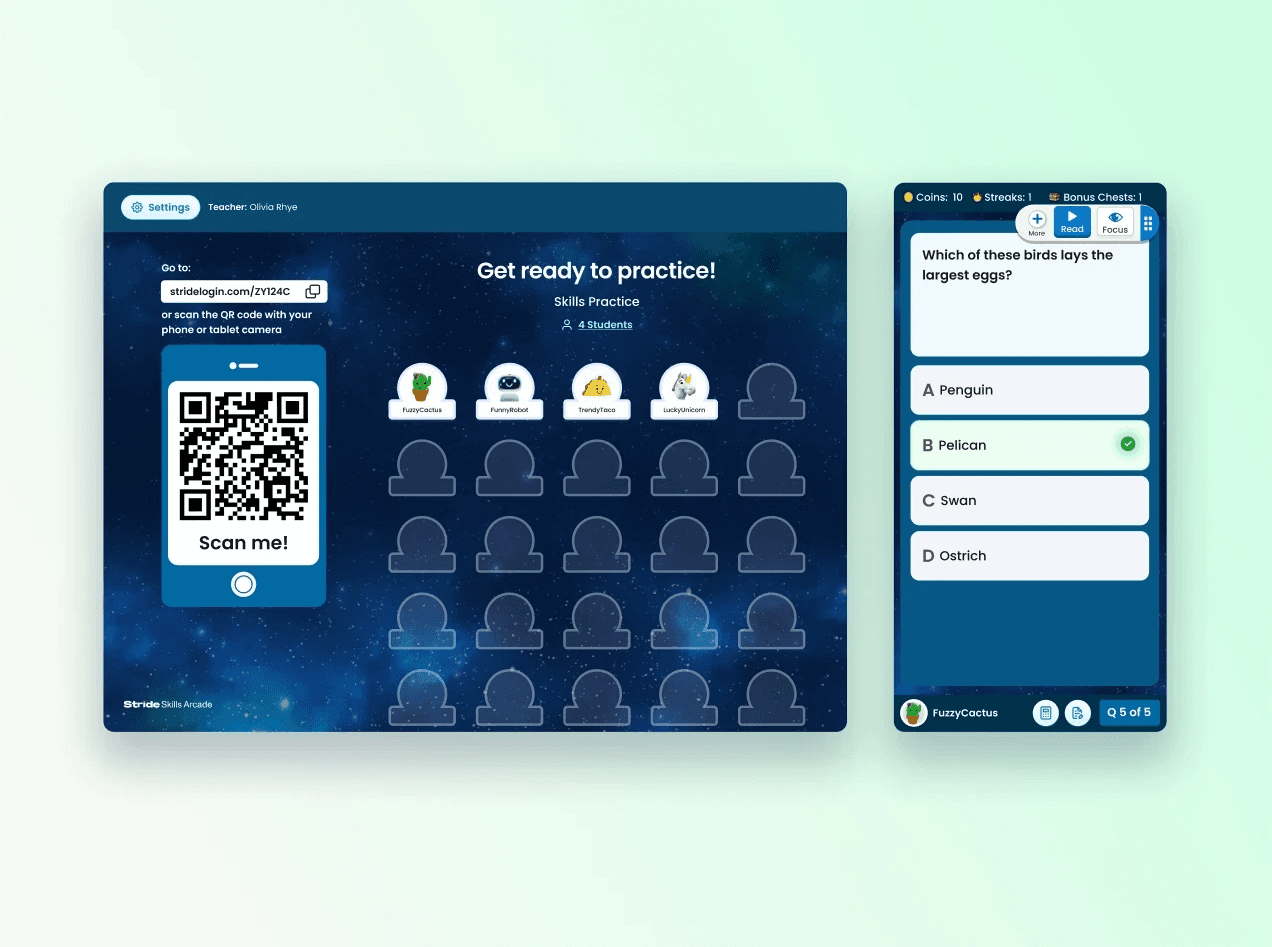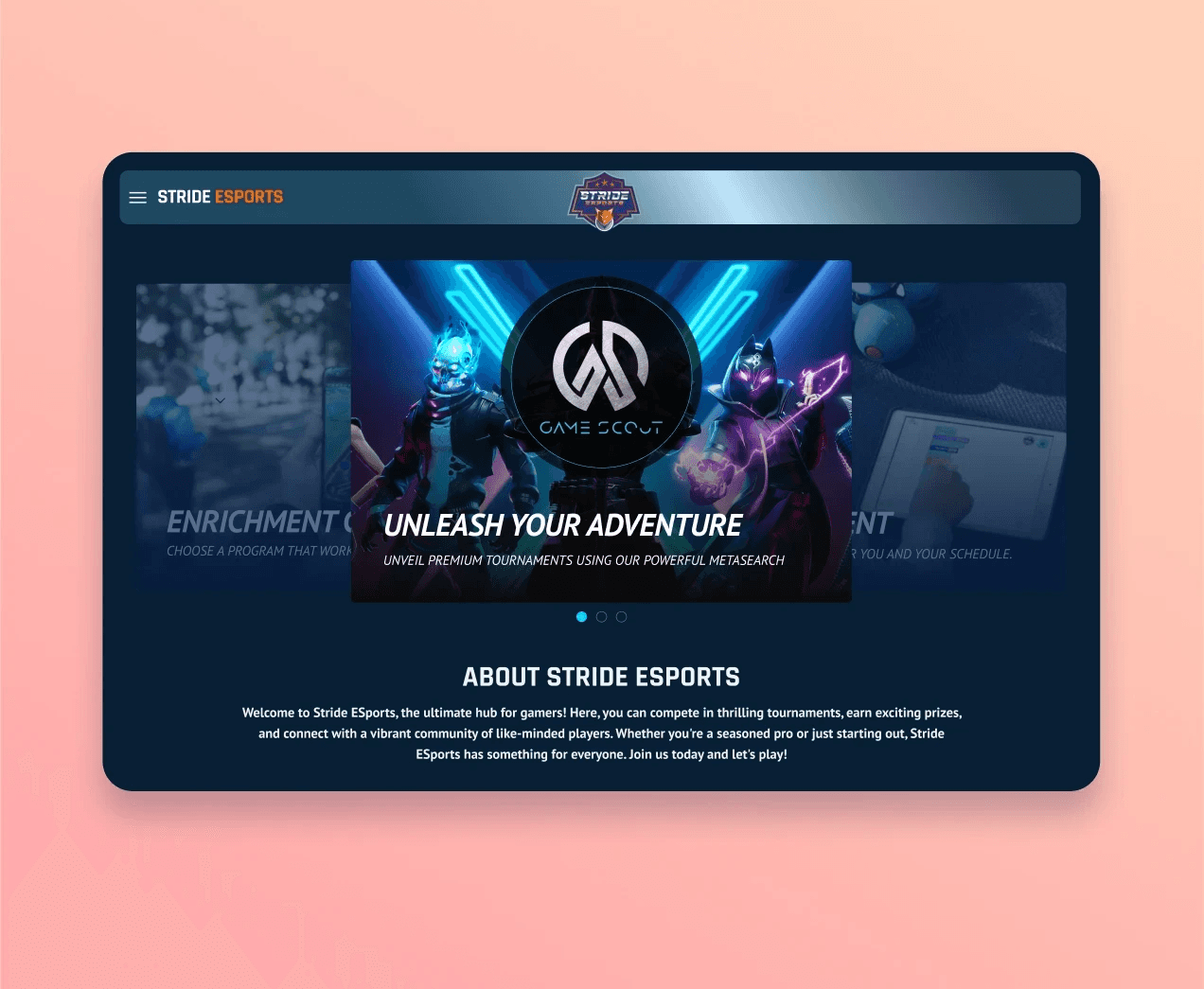New on Tallo - Career Attributes
New on Tallo - Career Attributes
New on Tallo - Career Attributes
Stride Inc.
2 weeks
UX Design
Stride Inc.
2 weeks
UX Design
Stride Inc.
2 weeks
UX Design



Overview
The Stride Career Platform targets people of all ages who are looking to learn a new skill, explore potential careers, and apply to jobs.
I chose to work on this project for the Stride Career Platform because, a year ago, I was in a similar position to users who were struggling to choose a career path or certification. I knew what I was interested in but needed a way to quickly get base-level context on a career before doing a deeper dive.
Problem
How might we provide value and direction towards career planning selections?
We looked at an existing matrix of user pain points and narrowed our scope to cover issues related to our “How might we” question. We then affinity grouped our remaining pain points and decided to focus on one in particular.
“Limited evidence for career match, why is this career a good fit for the user?”
Solution
Career attributes that add value to a user’s personality traits.

Product Research
Going back to my roots.
The problem I was solving for was rooted in communication and the presentation of information. So I looked back on my experience in marketing and corporate communications and found a solution in an unexpected place. Writing press releases.
Press releases need to be clear, concise, and effective at telling people what they need to know at the beginning and covering details closer to the end.

What's missing?

The Stride Career Platform includes a lot of the “What” and the “Who,” but isn’t telling the user “Why.”
User Research
How do people choose a career?
Personality - Matching a user’s personal orientation and needs.
Interest - Finding something that aligns with their interests.
Self Image - Careers reflect and mold an individual’s self image.
Insight
Users didn’t understand why a career was a good fit because of how the information was presented to them.
Ideation
For our competitive audit, a partner and I researched career quiz services to see how they connect users with potential careers.

We found that many of these websites presented results in a straightforward while allowing users to expand on their findings.
Low-Fidelity & High-Fidelity Wireframes
With all of this in mind, I started designing...

My low-fidelity design showing quick facts about a career using cards

My high-fidelity mockup relating career attributes to a user’s personal interests.
Feedback & Iterations
During our team's design sync, I received feedback on potential future iterations of my design.
Primary feedback surrounded simplifying my current design
“Create an emotional connection between user and their results.”
“Simplify your design so users are not overwhelmed or get distracted by navigating to another page.”
Secondary feedback involved adding value to existing features
“Work on a different presentation of that information that makes it look like attributes of the career rather than something else to navigate to.”
“Prioritize content already on the page.”
Final Product

Career attributes, a way for users to understand how a career path relates to their personality.

Reflection
This project was a great first look into the UX process where I had the opportunity to complete a project from start to finish. Everyone was willing to provide context, support my ideas, and give helpful feedback that pushed me creatively to design an effective solution for Stride Career Platform users.
There were two things that made my experience more challenging:
🤔 Problem Solving
Originally, I was trying to solve two problems with one design.
This ended up doing more harm than good as it was too difficult to address two issues with one effective solution. So I decided to focus on one problem statement and leave the other as a “nice to have” rather than directing time and energy towards two unique issues.
⚡️ Context
Since the product is still in development and is changing week by week, I needed to adjust my designs to fit an ever-changing product.
Overview
The Stride Career Platform targets people of all ages who are looking to learn a new skill, explore potential careers, and apply to jobs.
I chose to work on this project for the Stride Career Platform because, a year ago, I was in a similar position to users who were struggling to choose a career path or certification. I knew what I was interested in but needed a way to quickly get base-level context on a career before doing a deeper dive.
Problem
How might we provide value and direction towards career planning selections?
We looked at an existing matrix of user pain points and narrowed our scope to cover issues related to our “How might we” question. We then affinity grouped our remaining pain points and decided to focus on one in particular.
“Limited evidence for career match, why is this career a good fit for the user?”
Solution
Career attributes that add value to a user’s personality traits.

Product Research
Going back to my roots.
The problem I was solving for was rooted in communication and the presentation of information. So I looked back on my experience in marketing and corporate communications and found a solution in an unexpected place. Writing press releases.
Press releases need to be clear, concise, and effective at telling people what they need to know at the beginning and covering details closer to the end.

What's missing?

The Stride Career Platform includes a lot of the “What” and the “Who,” but isn’t telling the user “Why.”
User Research
How do people choose a career?
Personality - Matching a user’s personal orientation and needs.
Interest - Finding something that aligns with their interests.
Self Image - Careers reflect and mold an individual’s self image.
Insight
Users didn’t understand why a career was a good fit because of how the information was presented to them.
Ideation
For our competitive audit, a partner and I researched career quiz services to see how they connect users with potential careers.

We found that many of these websites presented results in a straightforward while allowing users to expand on their findings.
Low-Fidelity & High-Fidelity Wireframes
With all of this in mind, I started designing...

My low-fidelity design showing quick facts about a career using cards

My high-fidelity mockup relating career attributes to a user’s personal interests.
Feedback & Iterations
During our team's design sync, I received feedback on potential future iterations of my design.
Primary feedback surrounded simplifying my current design
“Create an emotional connection between user and their results.”
“Simplify your design so users are not overwhelmed or get distracted by navigating to another page.”
Secondary feedback involved adding value to existing features
“Work on a different presentation of that information that makes it look like attributes of the career rather than something else to navigate to.”
“Prioritize content already on the page.”
Final Product

Career attributes, a way for users to understand how a career path relates to their personality.

Reflection
This project was a great first look into the UX process where I had the opportunity to complete a project from start to finish. Everyone was willing to provide context, support my ideas, and give helpful feedback that pushed me creatively to design an effective solution for Stride Career Platform users.
There were two things that made my experience more challenging:
🤔 Problem Solving
Originally, I was trying to solve two problems with one design.
This ended up doing more harm than good as it was too difficult to address two issues with one effective solution. So I decided to focus on one problem statement and leave the other as a “nice to have” rather than directing time and energy towards two unique issues.
⚡️ Context
Since the product is still in development and is changing week by week, I needed to adjust my designs to fit an ever-changing product.
Overview
The Stride Career Platform targets people of all ages who are looking to learn a new skill, explore potential careers, and apply to jobs.
I chose to work on this project for the Stride Career Platform because, a year ago, I was in a similar position to users who were struggling to choose a career path or certification. I knew what I was interested in but needed a way to quickly get base-level context on a career before doing a deeper dive.
Problem
How might we provide value and direction towards career planning selections?
We looked at an existing matrix of user pain points and narrowed our scope to cover issues related to our “How might we” question. We then affinity grouped our remaining pain points and decided to focus on one in particular.
“Limited evidence for career match, why is this career a good fit for the user?”
Solution
Career attributes that add value to a user’s personality traits.

Product Research
Going back to my roots.
The problem I was solving for was rooted in communication and the presentation of information. So I looked back on my experience in marketing and corporate communications and found a solution in an unexpected place. Writing press releases.
Press releases need to be clear, concise, and effective at telling people what they need to know at the beginning and covering details closer to the end.

What's missing?

The Stride Career Platform includes a lot of the “What” and the “Who,” but isn’t telling the user “Why.”
User Research
How do people choose a career?
Personality - Matching a user’s personal orientation and needs.
Interest - Finding something that aligns with their interests.
Self Image - Careers reflect and mold an individual’s self image.
Insight
Users didn’t understand why a career was a good fit because of how the information was presented to them.
Ideation
For our competitive audit, a partner and I researched career quiz services to see how they connect users with potential careers.

We found that many of these websites presented results in a straightforward while allowing users to expand on their findings.
Low-Fidelity & High-Fidelity Wireframes
With all of this in mind, I started designing...

My low-fidelity design showing quick facts about a career using cards

My high-fidelity mockup relating career attributes to a user’s personal interests.
Feedback & Iterations
During our team's design sync, I received feedback on potential future iterations of my design.
Primary feedback surrounded simplifying my current design
“Create an emotional connection between user and their results.”
“Simplify your design so users are not overwhelmed or get distracted by navigating to another page.”
Secondary feedback involved adding value to existing features
“Work on a different presentation of that information that makes it look like attributes of the career rather than something else to navigate to.”
“Prioritize content already on the page.”
Final Product

Career attributes, a way for users to understand how a career path relates to their personality.

Reflection
This project was a great first look into the UX process where I had the opportunity to complete a project from start to finish. Everyone was willing to provide context, support my ideas, and give helpful feedback that pushed me creatively to design an effective solution for Stride Career Platform users.
There were two things that made my experience more challenging:
🤔 Problem Solving
Originally, I was trying to solve two problems with one design.
This ended up doing more harm than good as it was too difficult to address two issues with one effective solution. So I decided to focus on one problem statement and leave the other as a “nice to have” rather than directing time and energy towards two unique issues.
⚡️ Context
Since the product is still in development and is changing week by week, I needed to adjust my designs to fit an ever-changing product.
Buy Template
Buy Template
Preview
Preview
Other Projects
© Copyright 2023. All rights Reserved.
© Copyright 2023. All rights Reserved.


